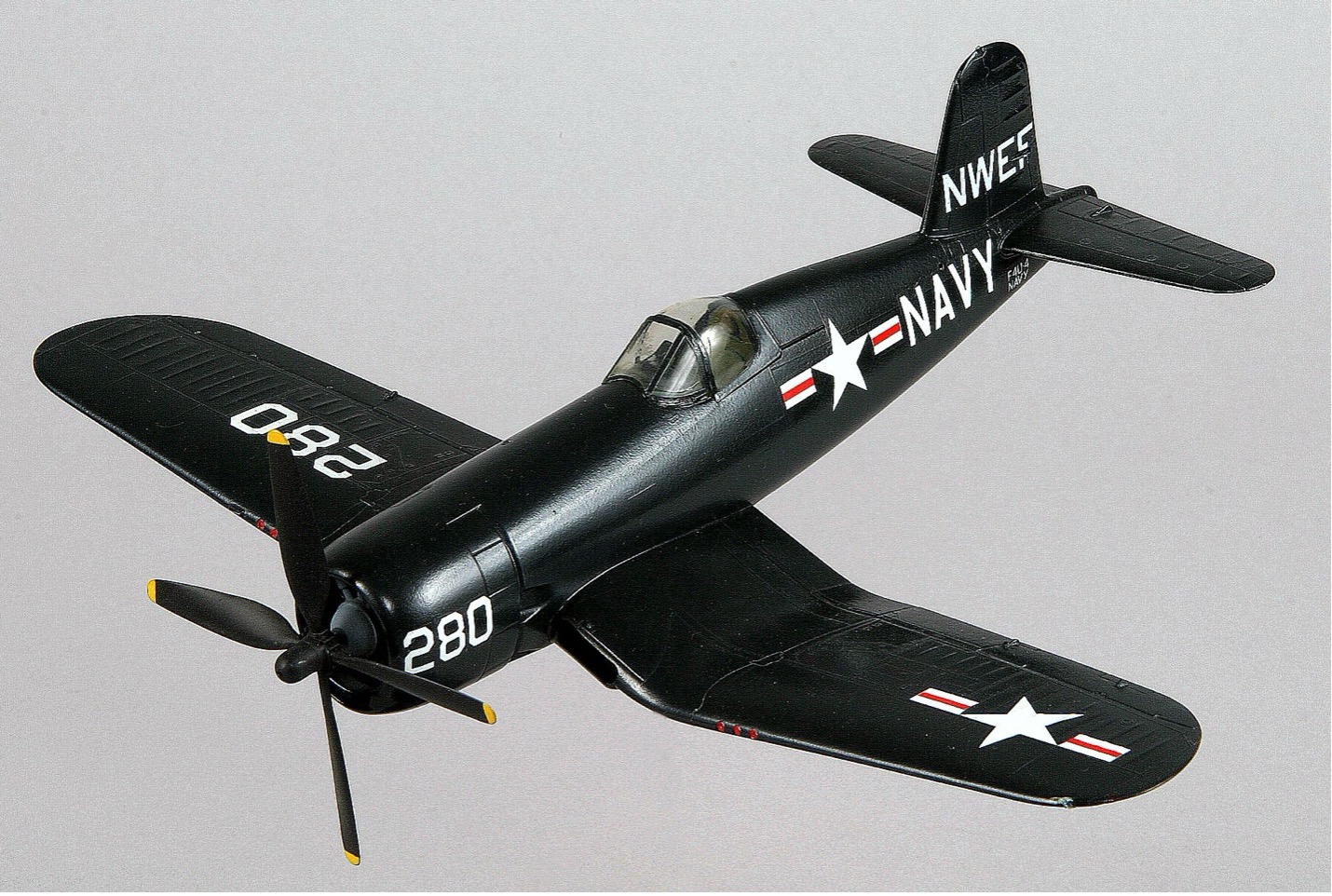USN NASWF Chance Vought F4U-A Corsair

MODEL BY:
M. Fiedler
Model Scale:
1/48
MODEL ADDED:
04/08/1995
historical significance
First Albuquerque Visit: 1950
Additional Information:
The US Navy F4U Corsair is an American fighter aircraft which saw service primarily in World War II and the Korean War. Designed and initially manufactured by Chance Vought, the Corsair was soon in great demand; additional production contracts were given to Goodyear, whose Corsairs were designated FG, and Brewster, designated F3A.
The Corsair was designed and operated as a carrier-based aircraft, and entered service in large numbers with the U.S. Navy in late 1944 and early 1945. It quickly became one of the most capable carrier-based fighter-bombers of World War II. Early problems with carrier landings and logistics led to it being eclipsed as the dominant carrier-based fighter by the Grumman F6F Hellcat, powered by the same Double Wasp engine first flown on the Corsair’s initial prototype in 1940. As a result, the Corsair’s early deployment was to the land-based squadrons of the U.S. Marine Corps and U.S. Navy. The Corsair served almost exclusively as a fighter-bomber throughout the Korean War and during the French colonial wars in Indochina and Algeria. This aircraft was one of the most successful fighters in WWII and Korea.
Albuquerque’s Kirtland Field was designated Kirtland Air Force Base in 1947, and the Armed Forces Special Weapons Project (AFSWP) operated on Sandia Base. When the United States Air Force established the Air Force Special Weapons Command at Kirtland Air Force Base in 1949, the United States Navy formed a detachment to investigate nuclear capabilities for naval aircraft and assist the AFSWP with naval equipment for demonstrations and training. The Naval Weapons Evaluation Facility (NWEF) operated through the Cold War investigating aircraft-weapon interfaces to provide United States Navy aircraft with nuclear weapons delivery capability.
In 1952 this detachment was designated the Naval Air Special Weapons Facility (NASWF) to conduct special weapons tests on the White Sands Missile Range and Tonopah Test Range in coordination with the United States Atomic Energy Commission. In March of 1961, the NASWF was re-designated the Naval Weapons Evaluation Facility (NWEF) and its mission was expanded to include safety studies on nuclear weapons. The aircraft used for NWEF testing were decorated with the NWEF thunderbird symbol and the NWEF detachment became known as the Rio Grande Navy by its sailors and civilians.
In 1992, with the consolidation of many naval activities and the drawdown of the U.S. defense budget, NWEF became part of the large, multisite Naval Air Warfare Center Weapons Division in China Lake. In 1993 the NWEF was decommissioned and became the first nuclear-weapons-related facility in the Free World to be shut down. As NWEF closed, it transferred some of its remaining people and functions to the China Lake site.
A Chance Vought F4U Corsair, Bu. No. 97280, was attached to the Naval Air Special Weapons Facility (NASWF) at Kirtland Air Force Base at Albuquerque, New Mexico, in 1950.
The first photo below is of a F4U Corsair that landed in Albuquerque on January 11, 1968 while on its way to California. The plane developed carburetor trouble and landed here for repairs. The plane was on the way to a museum to be restored. After repairs, the Corsair it flew on to its final designation. The plane below was a restored flying Corsair seen at the 1976 CAF air show in Harlingen, Texas.
GALLERY:
SEARCH OUR DATABASE:
